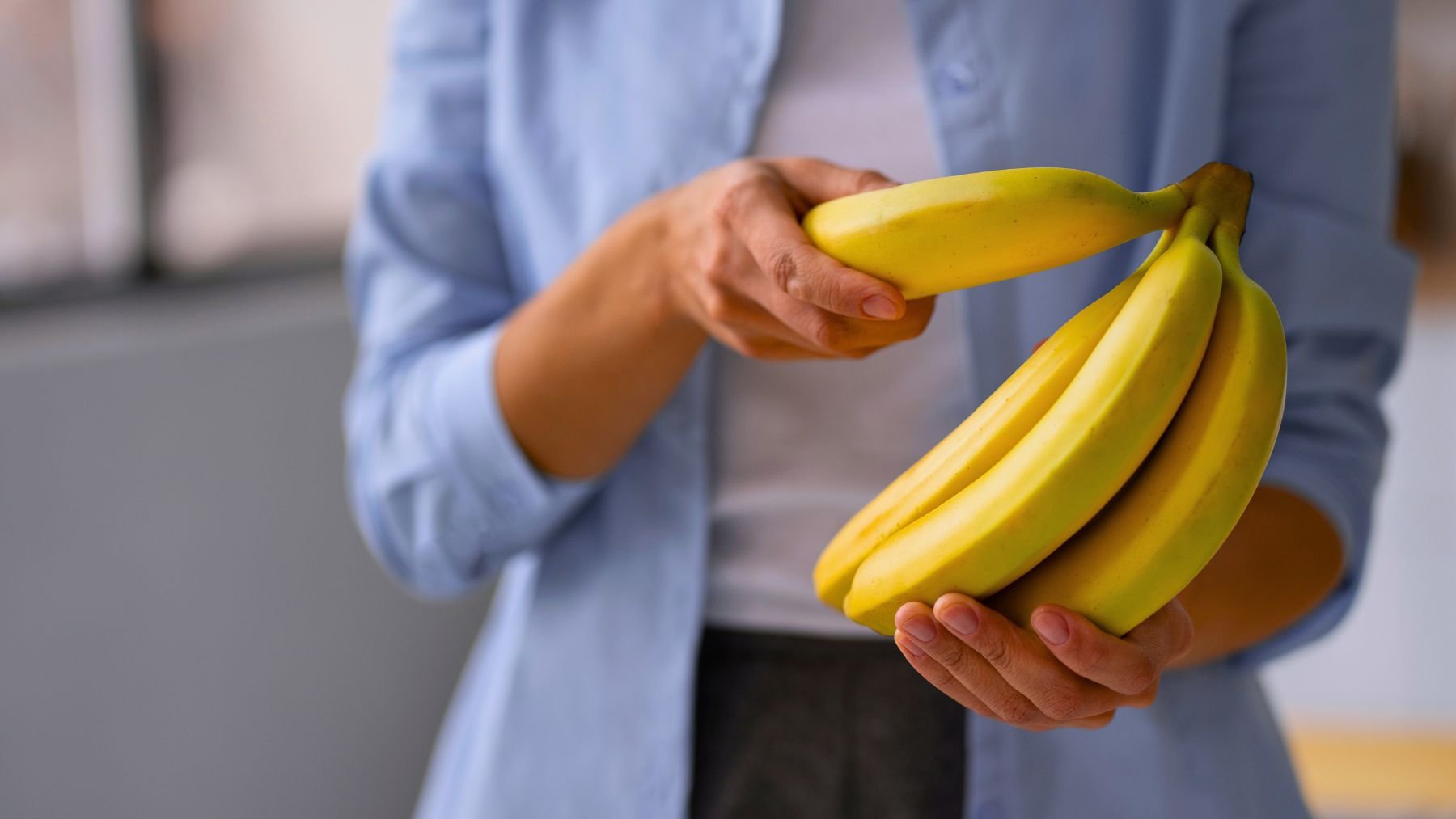If you are tired of finding that your bananas have become mushy and bruised, there’s a simple and effective method to preserve their freshness without resorting to the refrigerator. Here, we’ll explain the proper way to store bananas so that doesn’t happen again.
We’ll explore the ideal storage location and share additional helpful tips, such as properly separating bananas and managing their stems, to extend their shelf life. By following these recommendations, you can significantly prolong the good condition of your bananas and reduce food waste.
Where to store bananas
Avoid the refrigerator and discard plastic bags. The best place for your bananas is at room temperature (ideally around 54°F) in a cool, dry area that is well ventilated and shielded from direct sunlight. This means steering clear of sunny windowsills or locations near heat sources such as stoves.
Plastic bags or wraps tend to trap moisture and ethylene gas, an organic plant hormone that accelerates enzymatic reactions, speeding up the ripening process. Removing any store packaging immediately upon arrival ensures proper air circulation and curbs premature overripening.
Cold temperatures are equally problematic for banana storage. Although refrigerating very ripe bananas might pause further ripening of the inner flesh, it often causes the peel to turn an unappetizing dark brown.
For those that are not yet fully ripe, exposure to cold can cause cellular damage that compromises their texture and flavor. Maintaining a steady, comfortable room temperature is therefore essential for slowing ripening without harming the fruit.
Smart tips for longer-lasting bananas
While selecting the proper storage location is the most significant step in preserving your bananas, other practices can extend their freshness even more:
- Give them space (away from other produce): Bananas naturally emit ethylene gas, which not only accelerates their ripening but can also hasten the maturation of nearby ethylene-sensitive fruits and vegetables such as apples, avocados, broccoli, and leafy greens. Keeping bananas separate from these items, rather than tossing them into a mixed fruit bowl, helps maintain a controlled ripening process.
- Consider hanging them: Using a banana tree holder, a simple hook, or a dedicated fruit hanger allows them to hang freely and prevents bruising from pressure points that may occur when they rest on a countertop or are piled together. It also encourages better air circulation around each piece of fruit.
- Wrap the stems: The crown, where the bananas connect, releases a concentrated burst of ethylene. Wrapping just this stem end tightly with plastic wrap or aluminum foil can slow the release of this ripening gas, potentially extending the fruit’s prime ripeness by a day or two.
- Separate as they ripen: When bananas begin to show spots, gently detach them at the stem. This reduces the transfer of ethylene between the pieces, ensuring that not all bananas overripen simultaneously.
By following these guidelines, your properly stored bananas should remain fresh anywhere from two days to a week, depending on their ripeness when purchased. And if they do become overly soft, repurpose them in recipes such as banana bread, nutrient-packed smoothies, or even as a natural sweetener in various dessert creations.
